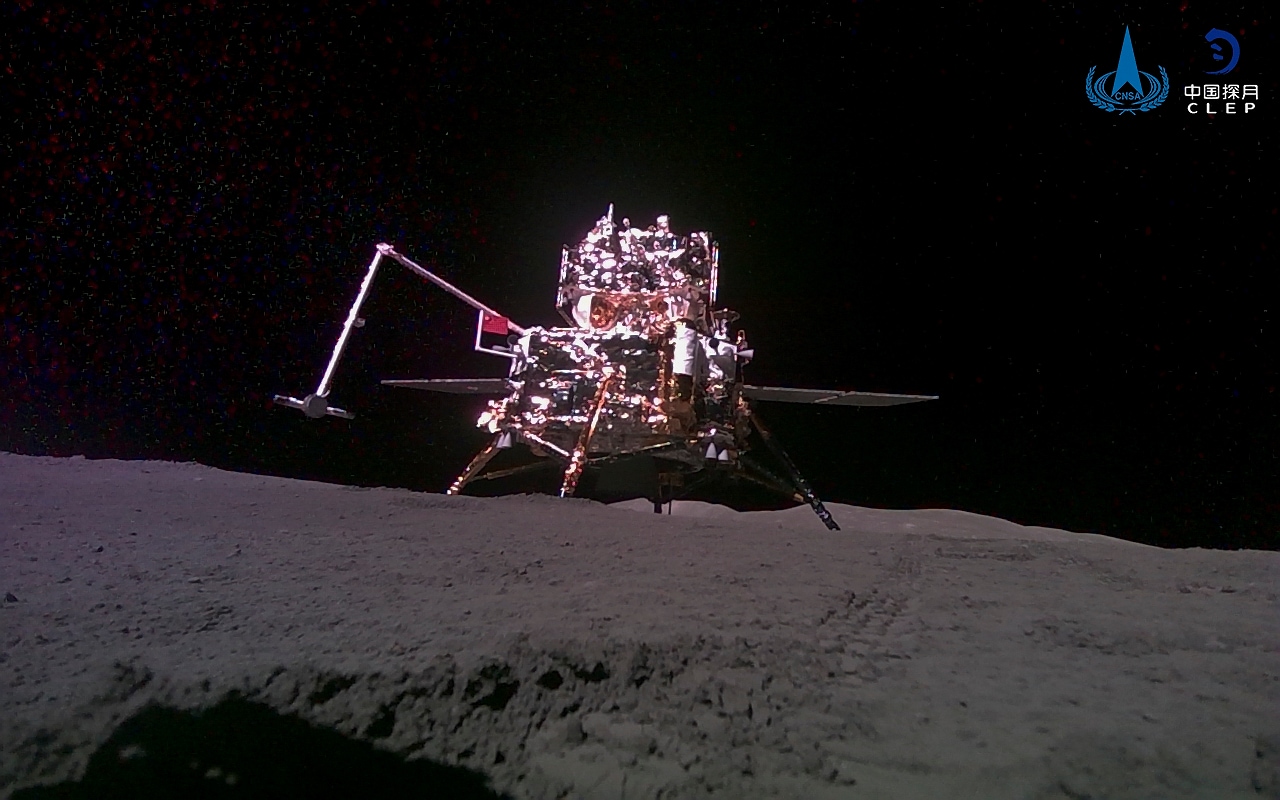
China says U.S. can’t stop it taking ‘giant steps’ in space
- Science
- June 27, 2024
- No Comment
- 112
China’s methodical steps over the years to extend its reach from Earth orbit to the moon and even Mars have worried U.S. officials, especially as NASA’s Artemis moon program faces delays.
The country had a “unique advantage of the system of mobilizing all resources nationwide” to advance its space ambitions, China National Space Administration’s vice administrator Bian Zhigang said Thursday in Beijing’s first public comments since the return.
Chinese officials blamed a long-standing U.S. law that prohibits direct space research cooperation for stopping the two powers working together. But the U.S. stance “cannot prohibit China from making giant steps forward in its space program,” he said, noting the project allowed the country to hone key technological areas that would boost long-term space capabilities.
Bian’s remarks underscored Beijing’s ambitions to become a space superpower and scientific force as the United States’ main rival in space exploration, laying out plans to land Chinese astronauts on the lunar surface by 2030 and set up a base at the moon’s south pole. This has created a new frontier in its broad rivalry with the United States, which also includes computer chips and solar panels.
GET CAUGHT UP
Stories to keep you informed
Before the latest mission, China had already successfully landed unmanned spacecraft on the far side of the moon and brought back samples from the near side, but the Chang’e 6 mission combined the two.
The uncrewed Chang’e 6 mission blasted off on May 2 and landed on the far side of the moon on June 2. It collected rocks and other material from near and around an impact crater called the Apollo basin, which is part of the South Pole-Aitken basin and the oldest, largest and deepest known crater on the moon, Chinese officials said Thursday.
A parachute carrying the Chang’e 6 returner landed at 2:07 p.m. local time on Tuesday at a designated desert area in Inner Mongolia, according to the live stream on a Chinese state media channel. Engineers monitoring the landing applauded, the video showed.
The returner carried about 4.4 pounds of lunar soil samples, which were flown to Beijing to be unboxed.
Bian invited researchers from around the world, including the United States, to apply for access to study the new samples.
The far side is the lunar hemisphere that is always facing away from Earth. It is also referred to as the “dark side,” not because of a lack of light, but because scientists know so little about that hemisphere.
The first samples from the lunar far side are “extremely exciting” and “might tell us a completely different geological story,” said Carsten Münker, a professor for geochemistry at the University of Köln in Germany who has applied to access samples collected by a previous Chinese lunar mission.
The Chinese mission covered sites “which have never been explored. All American and Russian missions went to the central nearside,” Münker said.
Two portions of the samples will be stored permanently, while the remaining will be distributed later to “scientists in China and foreign countries in accordance with the lunar sample management regulations,” Wang Qiong, deputy chief designer of the Chang’e-6 mission, told China’s CRI News Radio on Wednesday.
U.S. officials in NASA, the Pentagon and in Congress are concerned about the steady progress in China’s space exploration, because its civilian space program is directly tied to its military and the technologies developed by the space agency can be used to improve military capabilities.
Dual-use space technologies can help strengthen the nation’s science and technology sector and modernize its military, according to the U.S. Department of Defense. China’s advancements in space can help its military develop missiles, lasers and robots that can be used for combat in space, according to its 2023 report on the Chinese military.
But U.S. officials say that despite Beijing’s progress, the United States remains on track to return astronauts to the lunar surface ahead of China.
“I’ve been fairly pointed in my comments that we’re in a space race with the Chinese, and that they are very good,” NASA Administrator Bill Nelson told The Washington Post in a recent interview. “Especially in the last 10 years, they’ve had a lot of success. They usually say what they mean, and they execute on what they say.”
Research collaboration between the United States and China on space is rare. But following the Chang’e 5 mission’s return to Earth in 2020, NASA urged its scientists to apply for access to the roughly four pounds of lunar soil and rock it collected.
A long-standing U.S. law bars the use of NASA funds for projects with China or Chinese-owned companies without congressional approval due to concerns about the potential transfer of sensitive U.S. data or technologies to China.
U.S. Ambassador to China Nicholas Burns has said he does not believe the Chinese are interested in cooperating with the United States on space research.
“I don’t believe the Chinese have shown much of an interest in working with the United States” on space, Burns said during a Council on Foreign Relations event in December. “So in a way it’s contested. It’s a contested area and we feel comfortable with where we are.”
Even if U.S. researchers were given access to the latest samples, it would take many years before they could study them.
International researchers waited three years to apply for access to samples from the previous mission, Chang’e 5, which landed and returned to Earth in 2020. Ten applicants were interviewed in April this year, and China has yet to announce its selection. Five of those applicants were American.
The samples from the latest mission could be “very different” from the rocks collected from the near side of the moon from previous missions, researchers say. The materials collected by Chang’e 6 from the far side are believed to be older samples that can help explain the early history of the moon, experts say.
Kentaro Terada, a professor at Osaka University studying planetary sciences who also applied for samples from a previous Chinese mission, said “there is the high possibility” that the far side samples might hold records of early moon and hopefully some terrestrial elements of billions of years ago, which scientists have failed to find from previous near-side samples.
“I am looking forward to seeing the isotopic differences between the far-side sample and the near-side sample [of] Apollo,” Terada said, adding that some early Earth elements may have been transported to the moon by winds and preserved in lunar soils.
Samples from the far side could be “a game changer,” said Frederic Moynier, a French cosmochemist who applied for Chinese lunar samples from a previous mission.
“Chang’e 6 with far side samples would be very important to test” previously held beliefs about the moon, Moynier said.
#China #U.S #stop #giant #steps #space








